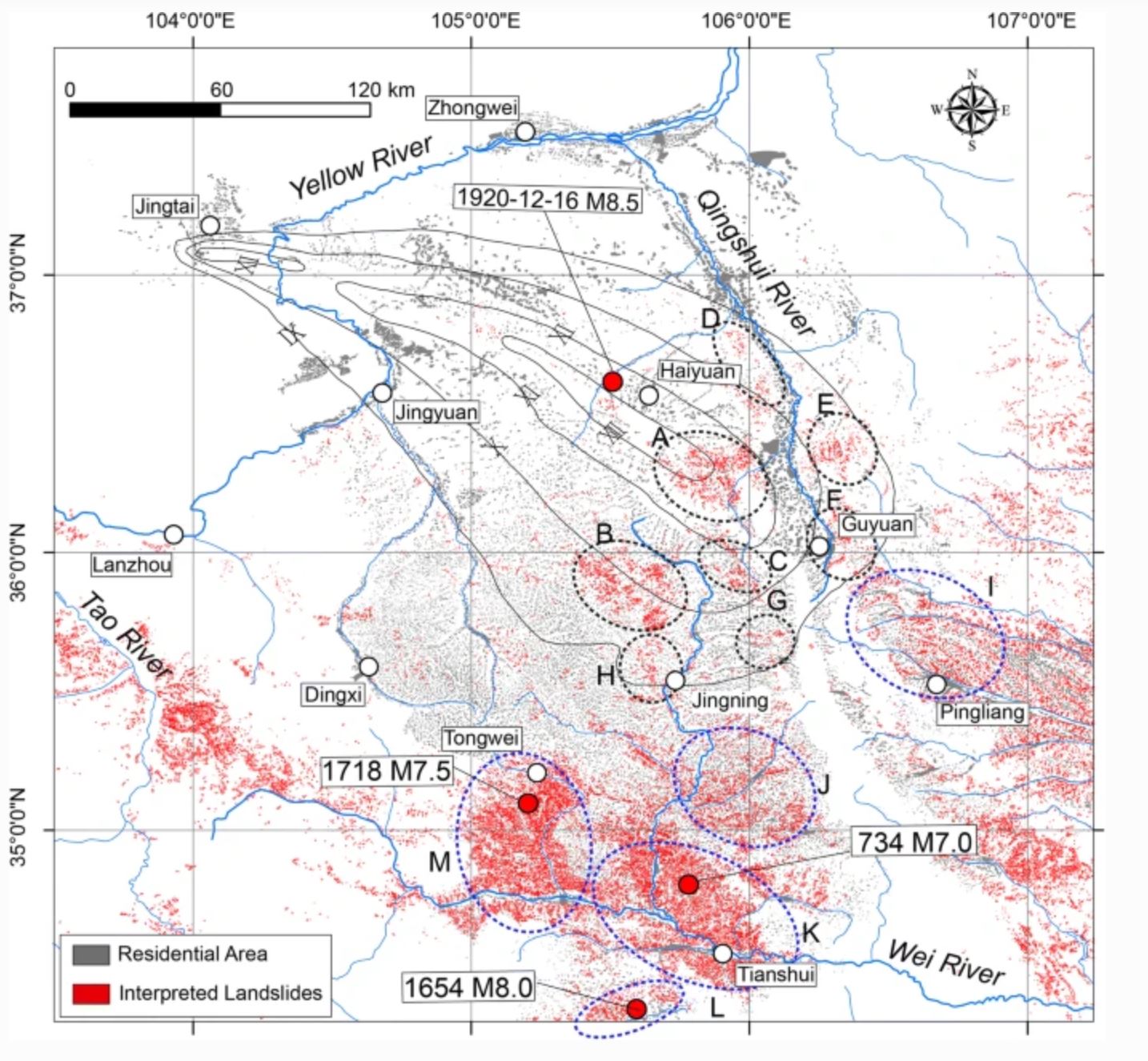28 September 2020
The 1920 Haiyuan earthquake in China
Posted by Dave Petley
The 1920 Haiyuan earthquake in China
It is widely thought that in terms of landslides, one of the most deadly earthquakes was the 1920 Haiyuan earthquake in China, which had a magnitude of about 8.5. It is generally accepted that this earthquake, which occurred on 16 December 1920, killed at least 234,000 people. It has previously been suggested that perhaps 100,000 of these fatalities were caused by large landslides in loess deposits. However, the amount of detailed information to substantiate this claim was limited, so there has been a great deal of uncertainty around this number.
In a paper just published in the journal Landslides (and sadly behind a paywall), Xu et al. (2020) have re-evaluated this earthquake in some detail, which is an important contribution. Their paper goes back through the literature (including reports from the scene at the time), exracts information from field surveys, and presents the outcomes of mapping from Google Earth imagery to present a catalog of landslides triggered by the 1920 Haiyuan earthquake. The study uses informaton from a four month tour of the area devastated by the earthquake undertaken by a team of Chinese scholars in the Spring and early Summer of 1021, who collected detailed information about the impact o the earthquake
In total Xu et al. (2020) have recorded 7151 individual coseismic landslides, noting of course that the majority of the smaller landslides triggered by the earthquake will not be visible now. The distribution of the landslides, and the distribution of settlements, is shown in the map, from the paper, below. The map includes the intensity zones for the earthquake:

A map of landslides associated with the 1920 Haiyuan earthquake in China, from Xu et al. (2020).
.
The map above includes a number of clusters of landslides, but Xu et al. (2020) note other substantial earthquakes (also shown on the map) that probably account for these.
Pulling all of this information together, the authors conclude that the number of landslide deaths from the 1920 Haiyuan earthquake was in the order of 32,554. The authors recognise that some landslide fatalities have not been recorded, but they conclude that estimates of 100,000 or more are likely to be too high. Of course, 32,500 is still a remarkably high number. The majority of the fatalities were likely to have been caused by the collapse of houses and of loess caves.
This is an incredibly useful contribution, providing another inventory of landslides from a large earthquake (in this case a dominantly strike-slip event) and generating a much more reasonable estimate of the landslide losses from this event.
Reference
Xu, Y., Liu-Zeng, J., Allen, M.B. et al. 2020. Landslides of the 1920 Haiyuan earthquake, northern China. Landslides. https://doi.org/10.1007/s10346-020-01512-5


 Dave Petley is the Vice-Chancellor of the University of Hull in the United Kingdom. His blog provides commentary and analysis of landslide events occurring worldwide, including the landslides themselves, latest research, and conferences and meetings.
Dave Petley is the Vice-Chancellor of the University of Hull in the United Kingdom. His blog provides commentary and analysis of landslide events occurring worldwide, including the landslides themselves, latest research, and conferences and meetings.
this information is not very relevent to the main topic and talks more about earthquakes that happened hundreds of years ago